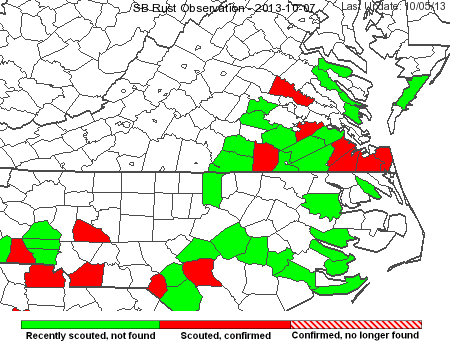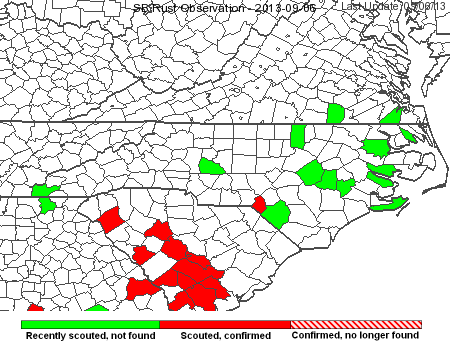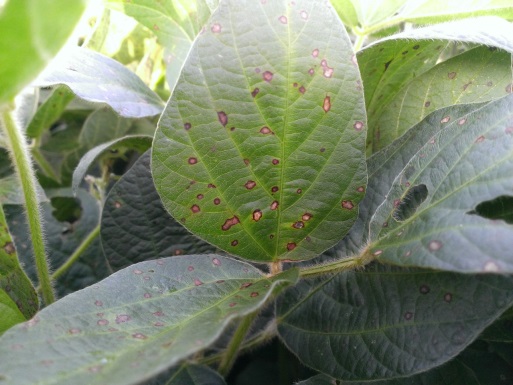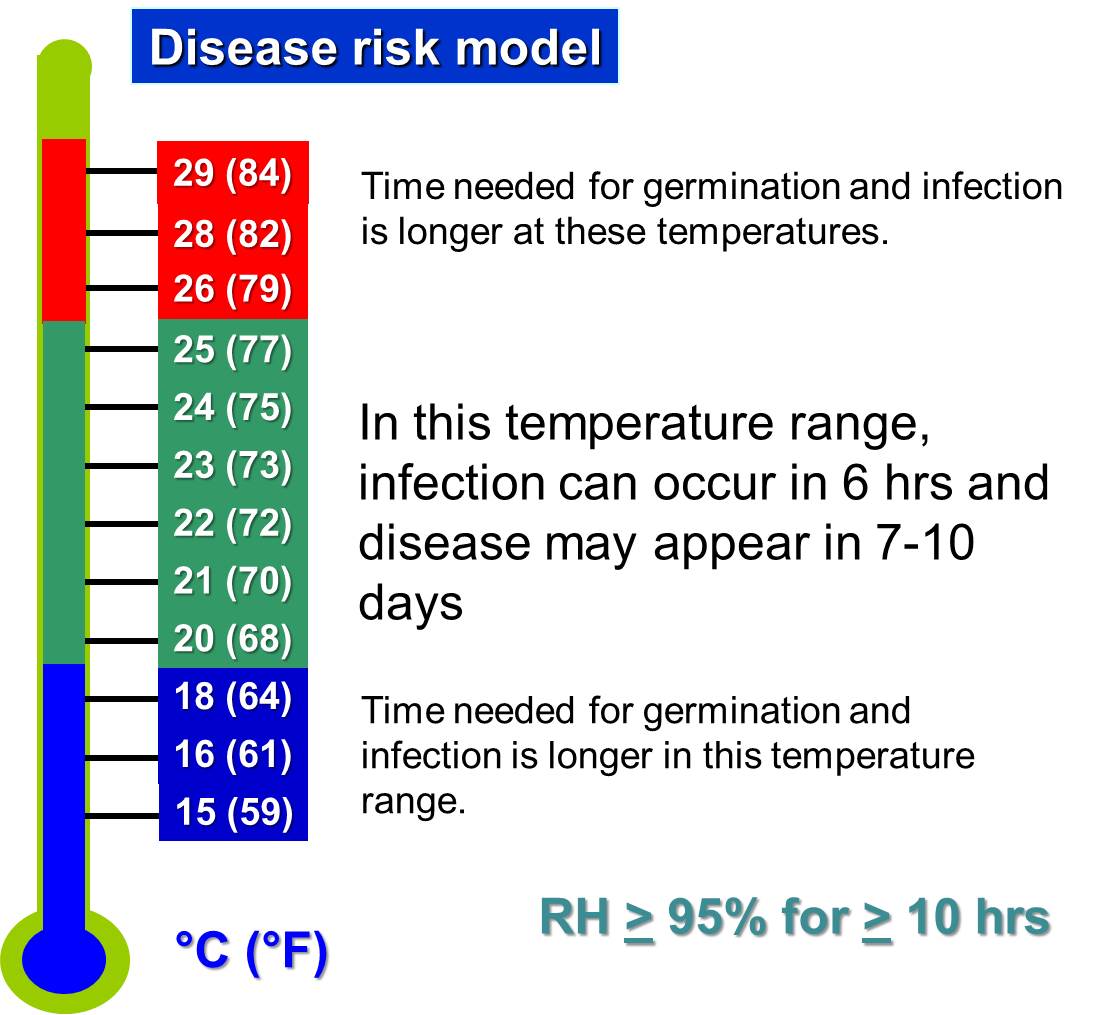Hillary L. Mehl, Extension Plant Pathologist, Virginia Tech Tidewater AREC, Suffolk VA
Last week, soybean rust (SBR) was confirmed in several more counties in Virginia bringing the total to eight (Suffolk, Chesapeake, Virginia Beach, Isle of Wight, Hanover, Prince George, Brunswick, and Sussex). The level of infection on soybean leaflets was low, and though we have confirmed the fungus is present throughout the region, we are not seeing much disease development.  This is probably due to dry weather conditions, and fortunately, this has allowed for most of the soybean crop to reach R6 and escape the threat of yield losses from SBR. The fact that the fungus has spread but caused little disease is a good illustration of how important environmental conditions are to the development (or lack of development) of disease epidemics. Even if the weather conditions do become more conducive, there is not enough time left in the season for SBR to reach high enough levels to impact yield. The SBR fungus arrived relatively early in Virginia this year, but it is unlikely to impact the soybean crop in the state.
This is probably due to dry weather conditions, and fortunately, this has allowed for most of the soybean crop to reach R6 and escape the threat of yield losses from SBR. The fact that the fungus has spread but caused little disease is a good illustration of how important environmental conditions are to the development (or lack of development) of disease epidemics. Even if the weather conditions do become more conducive, there is not enough time left in the season for SBR to reach high enough levels to impact yield. The SBR fungus arrived relatively early in Virginia this year, but it is unlikely to impact the soybean crop in the state.
The standard recommendation for control of SBR once it is confirmed within 100 miles of a crop is to spray soybeans that have not yet reached the R6 stage with triazole or pre-mix fungicides. However, an important caveat to the rule this late in the season is that the crop should also have good yield potential. Otherwise, there may be little or no economic benefit to fungicide sprays. Both Dr. Holshouser and Dr. Rideout concur that the threat of SBR to Virginia soybeans has likely passed.
As always, feel free to contact me if you have any specific questions or concerns.
Hillary L. Mehl, Ph.D.
Assistant Professor of Plant Pathology
Virginia Tech Tidewater AREC
6321 Holland Road
Suffolk, VA 23437
Telephone: (757) 657-6450, ext. 423
Cell: (530) 906-0807
email: hlmehl@vt.edu






